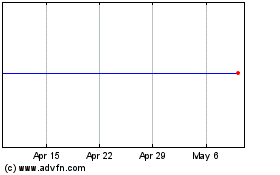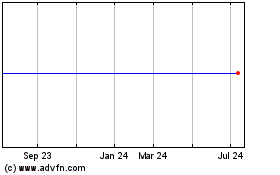US Education Dept Releases Higher Education Rule Package
October 28 2010 - 12:28AM
Dow Jones News
The U.S. Department of Education on Thursday will release a
series of new rules governing higher education, including
restrictions on recruiter compensation and new requirements on
disclosing graduation and job placement rates at career-focused
programs.
The rules, which have been in the works for more than a year, go
into effect July 1. The department said it is still on track to
release the so-called gainful employment rule early next year for
implementation in summer 2012. That regulation, which attempts to
measure how well non-degree certificate programs prepare students
for work, ties their access to federal student aid to graduates'
debt loads.
"These new rules will help ensure that students are getting from
schools what they pay for: solid preparation for a good job,"
Education Secretary Arne Duncan said in a statement.
While some of the final rules are only slightly different from
their earlier iterations, released this summer, the Education
Department softened the regulation regarding new non-degree
certificate programs, a proposal that had been a serious concern
for some schools. Beginning in July 2011, institutions must notify
the department of new programs before opening them, and some may
need to formally apply for approval.
However, schools will not be required to provide the department
with documentation from employers showing the programs' curriculum
will prepare students for relevant work and that there is a demand
for such graduates, as an earlier proposal had recommended. The
department said many states and accrediting bodies already require
such information.
As expected, the rules also tighten incentive compensation
guidelines by eliminating 12 "safe harbors" that had allowed
student recruiters to be paid in part--but not solely--on their
success in enrolling students. Incentive payments now cannot be
based "in any part" on enrollment or financial aid metrics. Some
for-profit schools have already rolled out new recruiter payment
plans in advance of the change.
Other rules are intended to clarify the timeline in which
schools must return federal student aid after a student withdraws,
define a credit hour for the purpose of awarding federal student
aid and require for-profit and vocational schools to provide
prospective students with easy-to-find graduation and job placement
rates and tools by which to calculate potential debt.
Schools will need to use calculations from a state, accrediting
body or the National Center for Education Statistics to determine
employment rates. Some institutions have come under fire, including
at a recent U.S. Senate hearing, for alleged inflation of job
placement figures.
For-profit colleges have opposed a number of the proposed rules,
arguing the regulations could limit access to higher education as
the schools are forced to slow enrollment growth, shut programs or
make other changes. The schools' stocks, which have been volatile
throughout the rule-making process, are all negative
year-to-date.
Although the slew of rules released Thursday will quell some
fears, the schools--and their investors--likely will remain anxious
until the final version of the gainful employment regulation is
issued. A number of institutions have already predicted slowing
new-student enrollment, and Apollo Group Inc. (APOL) earlier this
month withdrew its earnings guidance because of regulatory
uncertainty.
The Education Department said that over the next few weeks, it
will hold a series of public hearings and meetings with more than
30 organizations and individuals who submitted comments on the
early version of that rule. The department said it received more
than 90,000 comments on the proposal.
-By Melissa Korn, Dow Jones Newswires; 212-416-2271;
melissa.korn@dowjones.com
Capella Education Company (MM) (NASDAQ:CPLA)
Historical Stock Chart
From Mar 2024 to Apr 2024

Capella Education Company (MM) (NASDAQ:CPLA)
Historical Stock Chart
From Apr 2023 to Apr 2024
